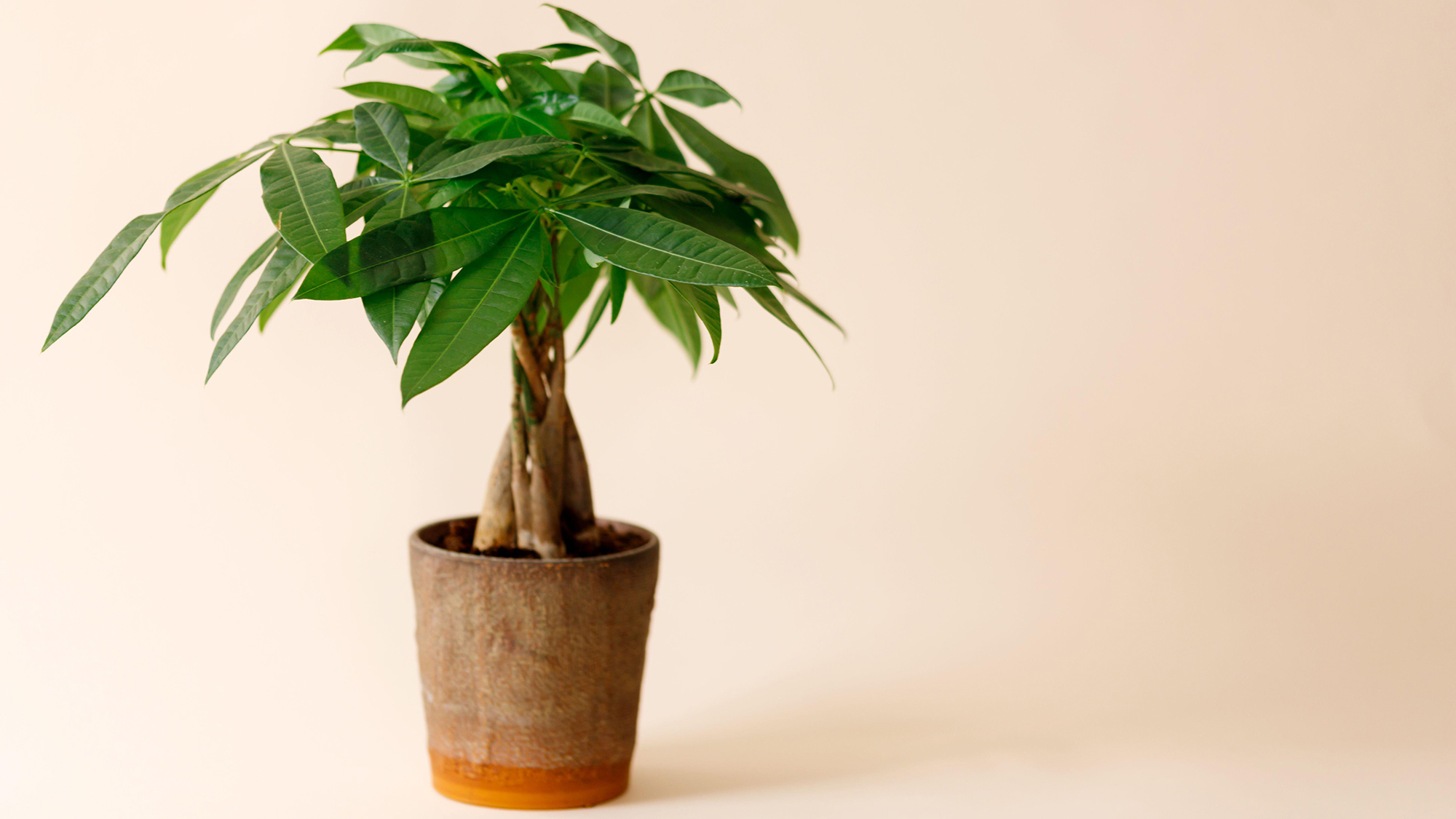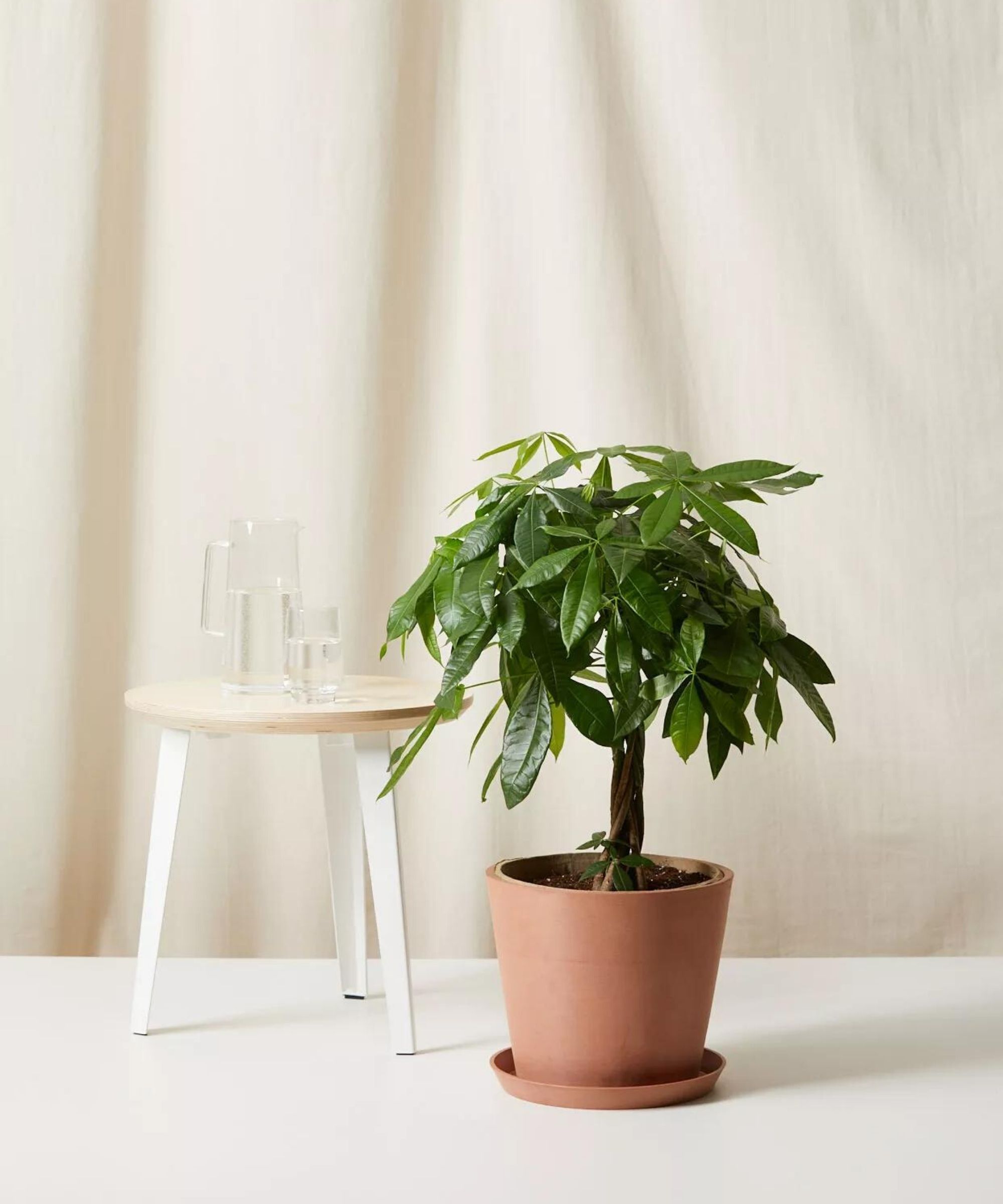How often should I water my money tree? The rules you need to follow to keep them healthy
The experts reveal how often to water a money tree correctly, to keep these popular houseplants thriving for years to come


Plant parents of all expertise levels feel drawn to the tropical indoor tree known as the money tree. Thanks to its beautiful braided stem, glossy green leaves, and reputation in Feng Shui for bringing good luck to the home, the money tree has been one of the most popular houseplants for years.
If you’re unsure how to keep your money tree alive and well, rest assured that this beginner-friendly plant doesn’t require too much-dedicated attention.
When it comes to money tree care and watering, the most important thing to keep in mind is that the tree’s soil should be relatively dry (but not parched) before you water it. Not doing so could be why your money tree is losing leaves.
What is a money tree?
One of the best indoor trees, the money tree – also known as Pachira aquatica – particularly thrives in a humid environment, making it ideal for adding greenery to the bathroom. This popular houseplant is also one of the best pet-safe indoor plants and is naturally air-purifying, too.
Money trees are native to areas ranging from Mexico to the northern parts of South America and are noted for their popularity in East Asia as well.
How often should you water a money tree?
The low-maintenance nature of the money tree means keeping it properly watered is easy to handle.
Money trees should be watered as needed, and don’t have a specific watering schedule. The most important thing to know is that your money tree will need to be watered once its soil is noticeably dry.
Design expertise in your inbox – from inspiring decorating ideas and beautiful celebrity homes to practical gardening advice and shopping round-ups.
The experts at Bloomscape suggest watering your money tree once the soil is 50-75% dry, but not completely parched. To test the soil’s dryness, simply press your finger an inch or so into the soil. If the soil still feels damp you likely have a little more time until you need to water the plant, but if it feels mostly dry, it’s time to give your money tree another drink.
Make it a habit to check your money tree’s soil weekly to make sure you always have a gauge on when your plant needs more water.
When you water your money tree make sure to deeply water it but don’t leave it sitting in any standing water. Thoroughly water the tree until spillage starts to flow from the drainage hole, but make sure to discard the excess water that may land in the saucer in order to avoid root rot.

Signs you should water your money tree
Dry soil may be the main indicator that your money tree needs to be watered, but there are a few other signs to look out for as well.
If your money tree’s leaves are starting to yellow, it’s probable that you have not been giving it the appropriate amount of water. The first course of action after noticing yellow leaves should be to check the moisture of the soil. If the soil feels overly dry, your money tree is most likely underwatered. If that’s the case, give your plant a good watering and continue to monitor its soil regularly. If the soil feels moist or you notice standing water, it’s likely that your money tree is overwatered, in which case you should allow it to dry out and then move forward with less frequent watering.
Leaves that progress from yellow to brown are a sign that your plant needs more water. The ends of the leaves will likely brown first and feel dry to the touch. If you don’t course correct by giving your money tree water as the leaves begin to brown, they may turn entirely brown and start falling off of the plant.
Another sign you may need to adjust your watering schedule is if your money tree is not experiencing new growth.

Bridget Mallon is an experienced design and lifestyle editor with over a decade of experience in the field. She was previously the Editorial Director at The Spruce and MyDomaine and has held positions at Apartment Therapy, HGTV, Elle Decor, and Veranda. Her work can also be found on sites like Cosmopolitan, Esquire, The Huffington Post, and House Beautiful. Bridget studied journalism through the Honors Tutorial College at Ohio University. She graduated Magna Cum Laude in 2013. Bridget writes about all things home for Homes & Gardens.